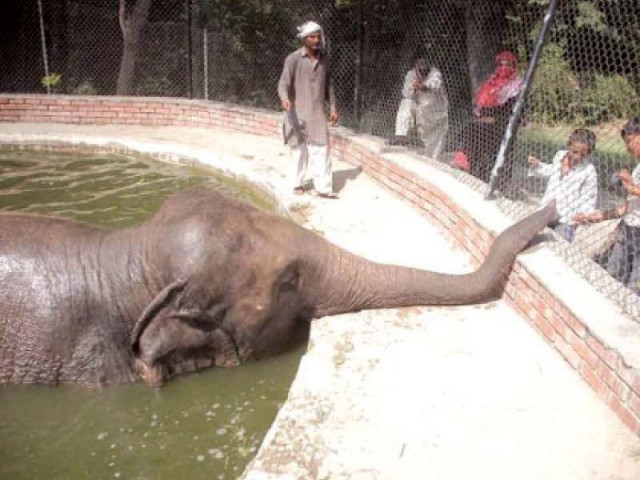Coming back to life: Saheli to be preserved, displayed at museum
The capital’s star elephant died of respiratory failure at the zoo last year.

Saheli, the star of the show, entertaining guests at the zoo. PHOTO: FILE
Once the favourite attraction at Marghazar Zoo, the late female elephant Saheli is due to be put on display at the Pakistan Museum of Natural History in another two months.
The 22-year-old elephant passed away at the zoo in May 2012, much to the dismay of capital’s animal lovers, a generation of whom grew up taking rides on her back. The average elephant can live well past its 60s, which is why Saheli’s demise was all the more tragic.
At that moment, the zoo administration had vowed to preserve the elephant, not only because she was a gift from Sri Lanka, but also because many people were sentimentally attached to her. “There are very few elephants in Pakistan and we must preserve them for educational purposes,” said Zoological Sciences Division Director Dr Muhammad Rafique.
The elephant was skinned the day it passed away and was buried behind its enclosure in the zoo. Saheli had been injured and was limping for a few days before sudden collapsing.
The cause of death was listed as respiratory failure in a post mortem conducted by the National Veterinary Laboratory.
Dr Saleem Sulheri, a veterinarian at the zoo, said the bones are going to be extracted for preservation. Rafique told The Express Tribune that preservation of large animals takes time. “The skin is thick and the animal is large, so it takes a while.” He added that the stuffed animal will be ready in the next two months and will be displayed for visitors at the museum.
Published in The Express Tribune, July 27th, 2013.


















COMMENTS
Comments are moderated and generally will be posted if they are on-topic and not abusive.
For more information, please see our Comments FAQ